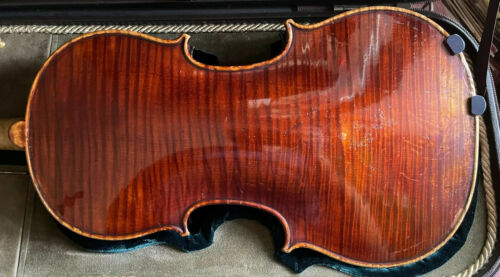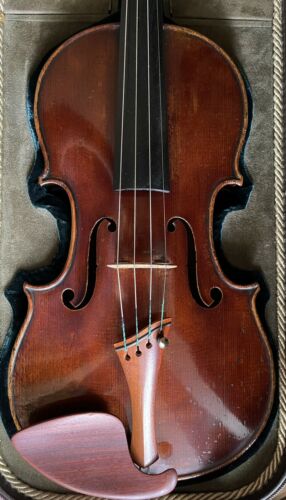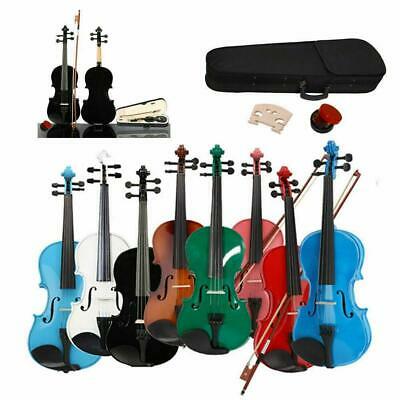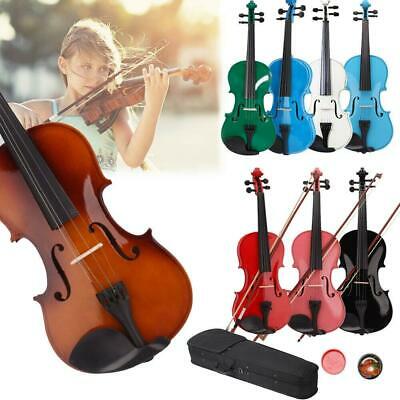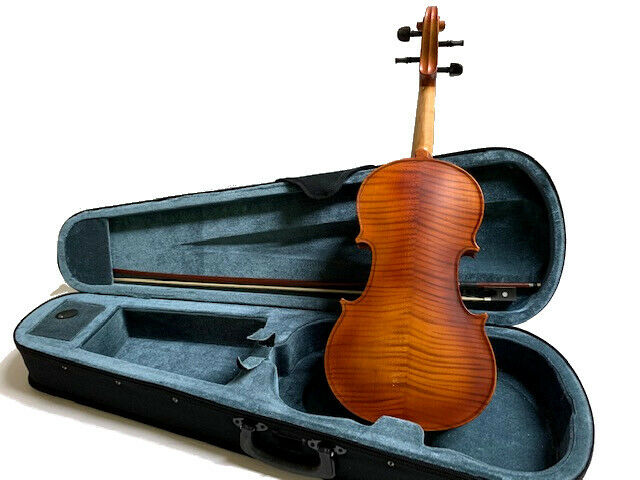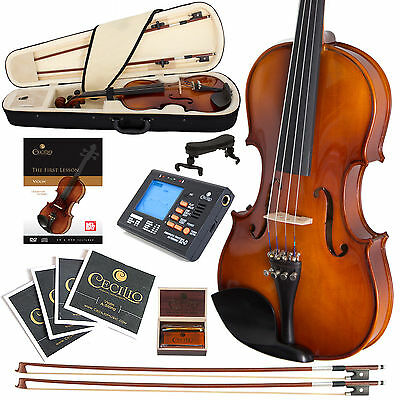-40%
Very Fine French Violin by Honoré Derazey circa 1825 - Superb Solo Tone!
$ 15840
- Description
- Size Guide
Description
Here is a very rare and fine 4/4 violin made by Honoré Derazey. It is just stunning in every way and one of the most beautiful examples from Derazey’s early period. This violin is more based on the Lupot/Gand ideal. The workmanship is top notch with refinement and careful attention to detail throughout. You can see the pride and great skill Derazey put into this instrument. It was as if he had a Stradivarius right next to his work bench while making this. The F-holes graced with perfection, the scroll bold and symmetrical, the corners and purfling sublime!The very best tone woods were chosen for this instrument with one of the most beautiful deeply flamed maple backs with matching ribs and scroll of the same wood. The one-piece spruce top has gorgeous even grain throughout.
The tone is deep, rich, vibrant, and even from lows to highs. It has an old soul. The lows are rich, emoting, and colorful with tremendous depth. The highs sparkle and radiate with a golden sweetness. The violin is very responsive and easy to handle. No holes or wolfs in the tone. It has a very powerful and commanding tone. This violin would suit the most demanding professional player and perfect for a soloist or concertmaster. The tone of this violin will easily rank with the very best French and Italian instruments out there. All parts are original and original varnish with lovely patina. The violin is in excellent condition for its almost 200 year age. There are a few professional repairs to the top including a small SP patch that was made long ago and was done so well, it is not discernible from the outside at all. No bass-bar repairs and no cracks to the back. Original neck and scroll. The violin is branded “H. Derazey” on the inside back and top near the bass bar. Measurements are: LOB: 362, UB: 170, MB: 118, LB: 213.
This has been one of my favorite instruments and I know the next owner will greatly treasure it. The condition is remarkable for its age and the tone is a dream. I purchased the violin years ago from Patera Violins in Germany and it had previously belonged to a player in the Berlin Philharmonic who performed on it his entire career. David Folland worked on the setup and it is adjusted to its full potential.
Peter Ratcliff made a dendro for it. The latest tree ring is from 1820 and matches wood used by Vuillaume and Chanot. It would have been made around 1830 or before. Jonathan Marolle confirmed it’s a rare and pure example of Derazey. Rolland Terrier also confirmed Honore Derazey. The violin is also published by Serge Boyer, expert luthier at the Paris Court of Appeal for quartet instruments (violins, violas, cellos) in his Violindocs, a platform for photographic documentation on French violin making from 1700 to the present day, he has dated it to 1825: https://violindocs.com/violon/5678/
Violin has a current appraisal.
It is a superb example, one that will greatly increase in value in the years to come.
Tone Sample:
https://youtu.be/46syOGSiVeE
Detailed Images:
https://ibb.co/album/7QQSXX
https://ibb.co/album/GsStrG
Honore Derazey:
Honoré Derazey (1794-1883) is (and was in his own time) considered as one of the leading French violinmakers of the 19th century. He completed his apprenticeship in Mirecourt and then spent some years working in several of the leading workshops in Paris, perfecting his craft. He then settled in Mirecourt, where he spent the rest of his life. He won the foremost exhibition medals– in Paris (1839, 1844, 1849 and 1855) and in London (1851 and 1862). According to the French authority, René Vannes, the great J. B. Vuillaume acquired instruments from Derazey and sold them from his Paris studio, after fitting his own personal label into them.
From 1844 onwards, Derazey sought the more commercial avenue of a large studio and apprentices, resulting in massive output of instruments that became extremely popular in England. However, Derazey’s own work always conformed to the highest standards – Henley refers to ”workmanship ‘à la finesse' in all verity”, and to ”the essence of delicacy”. He also confirms the fact that Derazey’s personal work was seldom labelled, but rather branded in a very simple manner with H D or H. Derazey.
Of Derazey’s f-holes, Henley says: ”Sound-holes not surpassed by any maker of any period or any school for perfect grace and curve.” and he refers to the ”…artistic combination of the sound-holes with the waist curve.”
